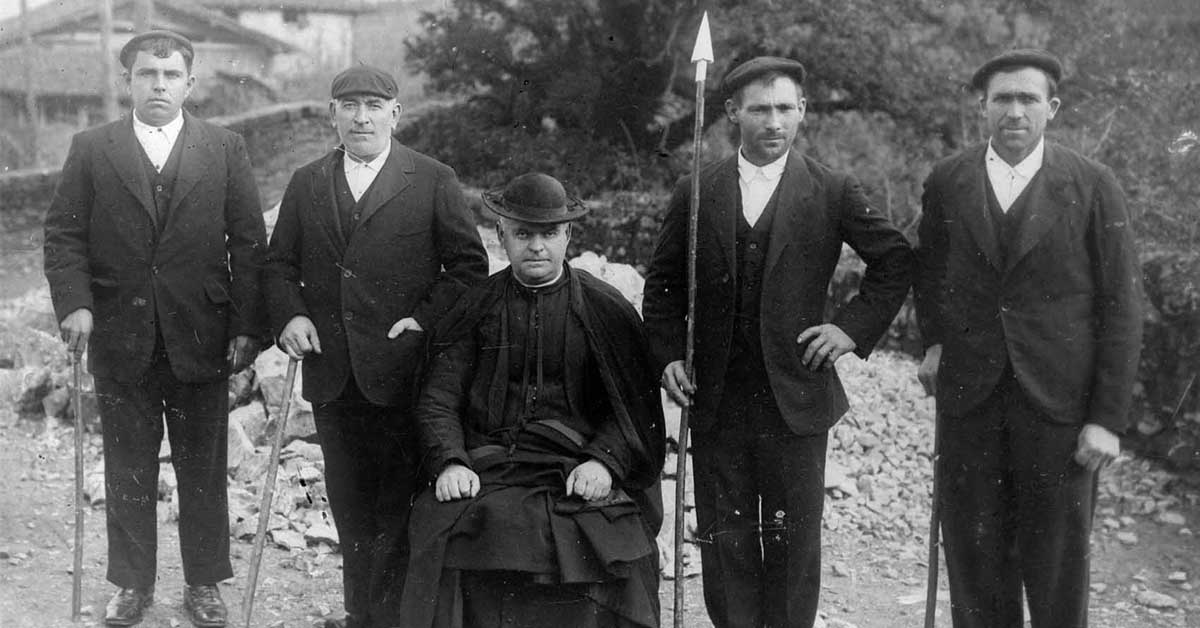Basque ethnography at a glance
The 29th of September is an important date on the Basque calendar, as it is the feast day of St. Michael, our patron saint, and the best known and beloved of the archangels in heaven.
However, the date was also known for practical reasons, as it marked the end of the farming year in popular culture. In other words and going even further back in time, it is the Christianised festivity of the equinox when summer ended and winter began.
In many places, that day was the start of the period that leaf litter or fern could be gathered from the common uplands, the livestock were taken to the winter pastures, the start of the work to get the forges or cold chambers ready, and the renewal of leases of mills, taverns or dwellings. And, among other interesting facts, that of renewing the posts of the elected officials of the village.
That was also the case in the Llodio Valley, saddled between Álava and Bizkaia, where two mayors were elected and whose term in office would last until the following St. Michael’s Day.
The local residents would be called to the meeting “from the hillocks” and by ringing the bells. The assemblies were held in the porch of the church, a place known as Batzalarrín [batzar + larrin] “in front of the church”, precisely in the graveyard, as it was felt that the presence of their ancestors would mean that things would be done with greater rigor and respect.
At that time, our cemeteries were the most emblematic civil environment of the town, the place where the living and dead met and coexisted. There were at the same time places of funerals, of trading, of leisure and of social activities. Those social spaces would then become arcaded with the passing of time.
The municipal assemblies and elections to the public offices of Llodio took place around a large and imposing tree that grew in Batzalarrin. A masonry stone table was then erected under it to make the place more important. Those tables were known as “pielarri”, in other words, fiel + harri, ‘the stone [table] of the faithful’.
On 29 September each year, two mayors were elected to head the local government, along with other posts, in that setting straight out of a novel. A copper recipient was used for the election. A type of bell was placed in it with the names on paper of the two candidates of the political powers at that time: they were either from the local lineage of the Ugarte, “gamboíno”, or they were from the Anuntzibai, “oñacino”. The innocent hand of a child would then draw the name of the winning candidate. The elected officials (mayor and magistrate, two councillors, attorney general, head of the brotherhood and two worshippers) were subsequently validated by oath [zin + egotzi: make an oath, ‘councillor’] taken at that spot, in front of all the dead ancestors, on All Saints Day, 1 November.
Nothing now remains of those meetings held “in the customary place” and “…. explaining them in common Basque parlance…”. Not the tree or the stone table. Not even anything to remember them. From 1841 onwards, with the general disappearance of the offices of the old local organisation system, councils, brotherhoods, the anteiglesias administrative districts would disappear forever, along with the historical cuadrillas into which Llodio was subdivided: Olarte, Larrea, Goienuri and Larrazabal.
Thus, 182 years later, we are fighting to cover that lost or perhaps snatched memory. And there is no better day than 29 September, St. Michael’s Day, to pause under the Batzalarrin porch. Or, letting our imagination fly, at any other Basque municipality that takes our fancy. And there will be the dead, yet again, taking note.
Felix Mugurutza


